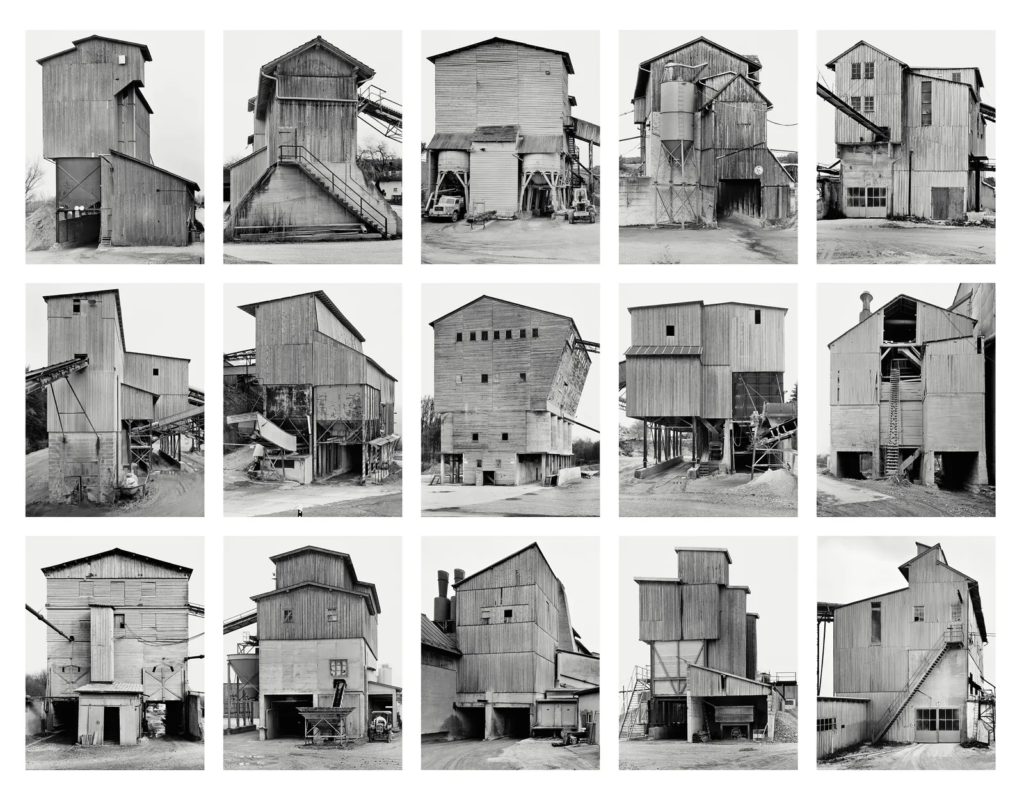What is it?
A typology can be defined as a study of “types”. That is a photographic series that prioritizes collecting and showcasing images in groups or sets rather than stand-alone images.


Case Study – Bernd and Hilla Becher
Bernhard “Bernd” Becher and Hilla Becher were German conceptual artists and photographers working as a collaborative duo. They are best known for their extensive series of photographic images, or typologies, of industrial buildings and structures, often organised in grids. As the founders of what has come to be known as the ‘Becher school’ or the Düsseldorf School of Photography, they influenced generations of documentary photographers and artists in Germany and abroad. They were awarded the Erasmus Prize in 2002 and the Hasselblad Award in 2004.


Image Analysis

Technical – All pictures in the typology were taken outside meaning the lighting is likely 100% natural, with detail visible throughout the image meaning aperture was likely high in order to have a deep depth of field. Little to none visual noise is present in any of the images, so ISO was kept to a minimum with a value likely between 100-200.
Visual – Each image is capturing some sort of machinery, presumably an oil well. Each picture has been taken from the same perspective creating an obvious similarity between them all, whilst still maintaining contrast since the background and environment around the oil wells are different in each photo. Some photos in the typology feature minimal natural elements (e.g. grass), although the frame is still largely dominated by the oil well so there is very little focus paid to natural landscapes in these images.
Conceptual/Contextual – Bernhard Becher gave up making paintings, drawings and etchings of old industrial buildings because he had decided that photography met his needs better. Painting necessitated composition which involved changing the object and was too subjective; photography was more precise and objective, being able to clearly capture and present exactly what is happening in a scene. The pictures in the typology leave little to nothing up to the imagination of the viewer, simply being 9 different oil wells occupying spaces, almost as if they are invading the natural landscapes.
